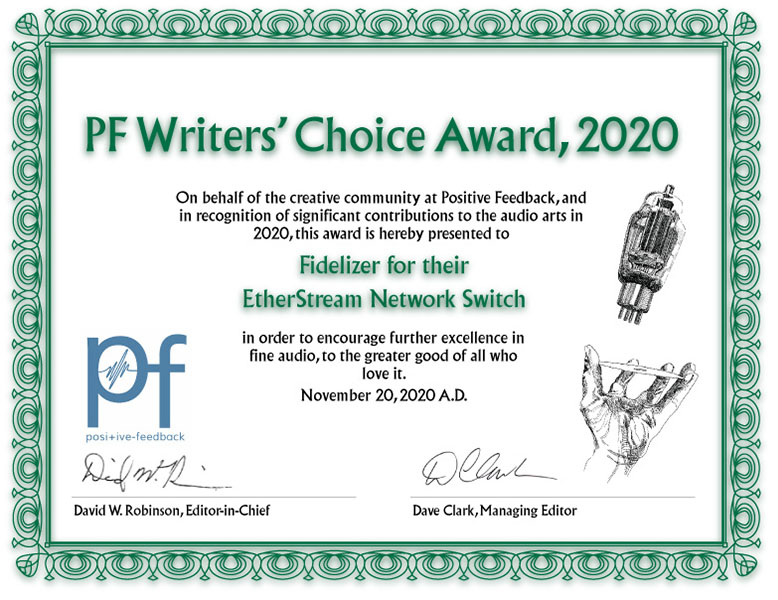
Although EtherStream Network Switch was reviewed before in Positive-Feedback by Tom Gibbs. However, EtherStream works very well with CH Precision C1 DAC so it gets another review with highend networked audio setup.
This is probably the first review of EtherStream with ultra highend networked audio setup. We have some reviews with great systems but I wouldn’t expect $395 modded switch to be paired up with over $30k DAC in review for sure.
I’m really happy to see fellow highend audiophiles appreciating EtherStream too. Here’s his listening impressions and I’m glad he noticed that EtherStream doesn’t produce the stereotype of bleached, hyper-detailed, fast, and edgy audiophile sound.

After hitting PLAY, it only took seconds before my eyes opened wide. The piano was crisp and sparkling, with good edge definition and texture. WOW! Just like that, the culprit was nailed—and this was only my first sip! For confirmation, I swapped back to the TP-Link switch and, sure enough, the excessively soft presentation was there again. The TP-Link did not produce what we call a soundstage. It only had width and height, no depth, it was 2-D flat like a paint gun splatter. The images were swimming together as notes emanated from an ill-defined place, indistinct, hollow sounding, and lacking a tonal center. This is what happens when the music doesn’t have a good foundation. Without support, the soundstage gets spongy.
A firm foundation underpinning the stage is very important. When you build a house, the foundation is laid first and everything that sits on it, depends on it. If it’s unstable, the whole structure becomes insecure and wobbly. Same with instruments on a soundstage. The EtherStream firmed up the structure and presented a 3-D stage layered side to side and front to back, populated with decently sized images.
Well, this was quite a flip from the last time I streamed with Ethernet. My brain struggled to process what just happened. Unawares, I had slipped into the mindset of the audio objectivists, the deniers of differences. I put together these streaming front-ends on the cheap without giving them much thought, thinking parts is parts. It never crossed my mind to give the switch a second thought. Damn! It’s the same old lesson I have to relearn (let alone the undesirable association with the deniers). Remember: rule number one in the High-End is everything counts. When you’ve been doing this long enough, time and again, it’s the things from out in left field, the stuff you think can’t possibly matter, that blindside you.
The foundation of the soundstage was not the only thing that changed. After burn-in (yes, a new EtherStream needs about 200 hours for optimal performance), the music had a decidedly acoustic bent with nice flow and satisfactory timbre. Tonal balance was evenly disbursed from the decent low-end up to a natural treble, plus there was some flesh on the bones. The EtherStream is positioned to appeal to the audiophile market, but it didn’t produce the stereotype of bleached, hyper-detailed, fast, and edgy audiophile sound.
One other thing: according to the Fidelizer website, a primary design goal for the EtherStream product was to address many consumers’ poor opinion of streaming vs. music files on local storage. Based on my own explicit comparison, the EtherStream gives you the same playback quality from Qobuz as music files on local storage. There was no audible difference.
He also asked me for linear power supply upgrade too but the suitable product was yet ready at that time. I’ll launch new products to use with EtherStream soon and I highly recommend to read his full review and see how EtherStream can perform in highend networked audio setup.




